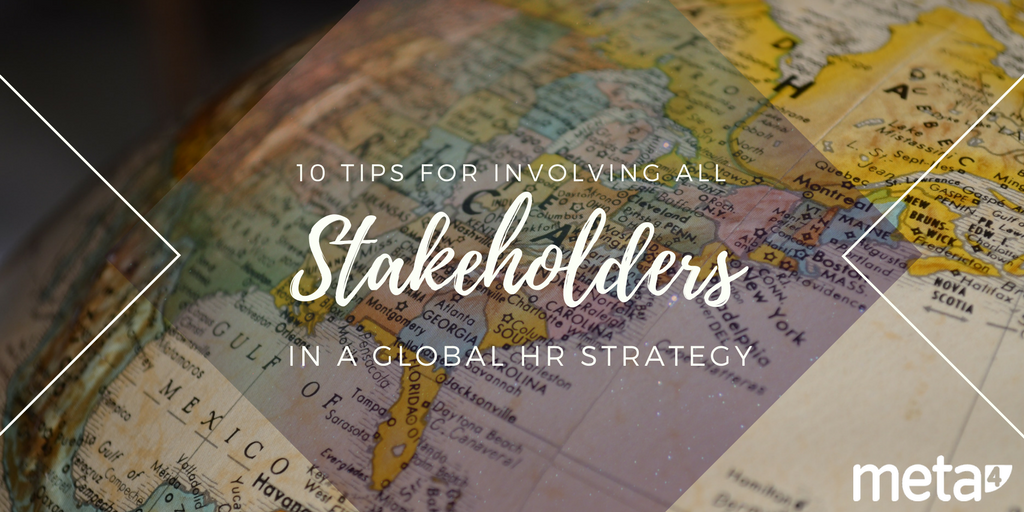Last week we discussed how a successful global HR strategy involves all stakeholders. You learnt it is crucial to make sure you do not leave out anyone, or any of their views and suggestions for a better global HR strategy that works for all.
Here we walk you through a list of 10 tips on how to involve each of the stakeholder groups, make room for their input and feedback, and implement goals and changes:
- Find sponsors
Secure senior backing for major initiatives in a Global HR strategy. Sponsors are those who understand the value of what you want to do for the company. By making the corresponding key strategic decisions, they can drive and mandate change. These are top managers, leaders or influencers.
- Listen to business leaders
For what you want to do to have value, you need to listen to business leaders to find out their plans, goals and challenges. Only then can you design a Global HR strategy that supports them through attracting and developing talent to achieve the business goals.
- Identify unofficial leaders
Information and opinions are not always transmitted through the official channels or the people expected. In all organizations there are key people, who are neither managers nor HR staff. Yet these are highly influential and well-networked among their peers. Identify these leaders and secure their support, as others will follow.
- Listen to detractors
As we are all creatures of habit who like our comfort zones, it is inevitable that there will be some resistance to change. However, this is reduced if the changes are seen to bring positive results. Not all new changes are positive, sometimes we miss the issues. That is why we need to identify the detractors and listen to their criticisms to be able to make the necessary improvements and better engage them in the transformation.
- Agree on goals
To really involve all stakeholders, all proposed goals should be shared right from the beginning. If there are any different points of view, listen to them and reach a consensus all together for adjusting these goals.
- Organize working groups
To share points of view and address issues, you need to set up working groups with different stakeholders – corporate HR office, local HR teams, and business areas – to facilitate improvements and adoption.
- Appoint leaders
A global HR strategy is a large undertaking and requires constant and effective communication and teamwork among stakeholders so everyone feels included. Appoint project leaders who can dedicate all their time to this.
- Communicate and listen
Two-way communication is instrumental for integrating stakeholders. If you want everyone to be part of the project you must share it. This involves frequent reporting on the advances as well as on the changes made from listening to others.
- Research trends
Even while you are implementing your global HR strategy, people management is constantly evolving. Keep on top of the latest research at global and local levels. Identify the ones that will bring value to your organization and make sure you have the flexibility to make relevant changes for different local markets accordingly.
- Set up mechanisms for improvements
Launching your global HR strategy is not the end of the story. It’s still business usual and that includes constantly evolving for the better. So it is important to set up feedback mechanisms and channels with all your stakeholders to be able to do just that.
We have provided further information in an ebook with a more detailed checklist on the stakeholders and what to consider for each of these points. Use this to guide your own global HR strategy planning and implementation.
{{cta(‘cc0f68f0-f7bf-41be-a492-80122a84dac3’)}}






